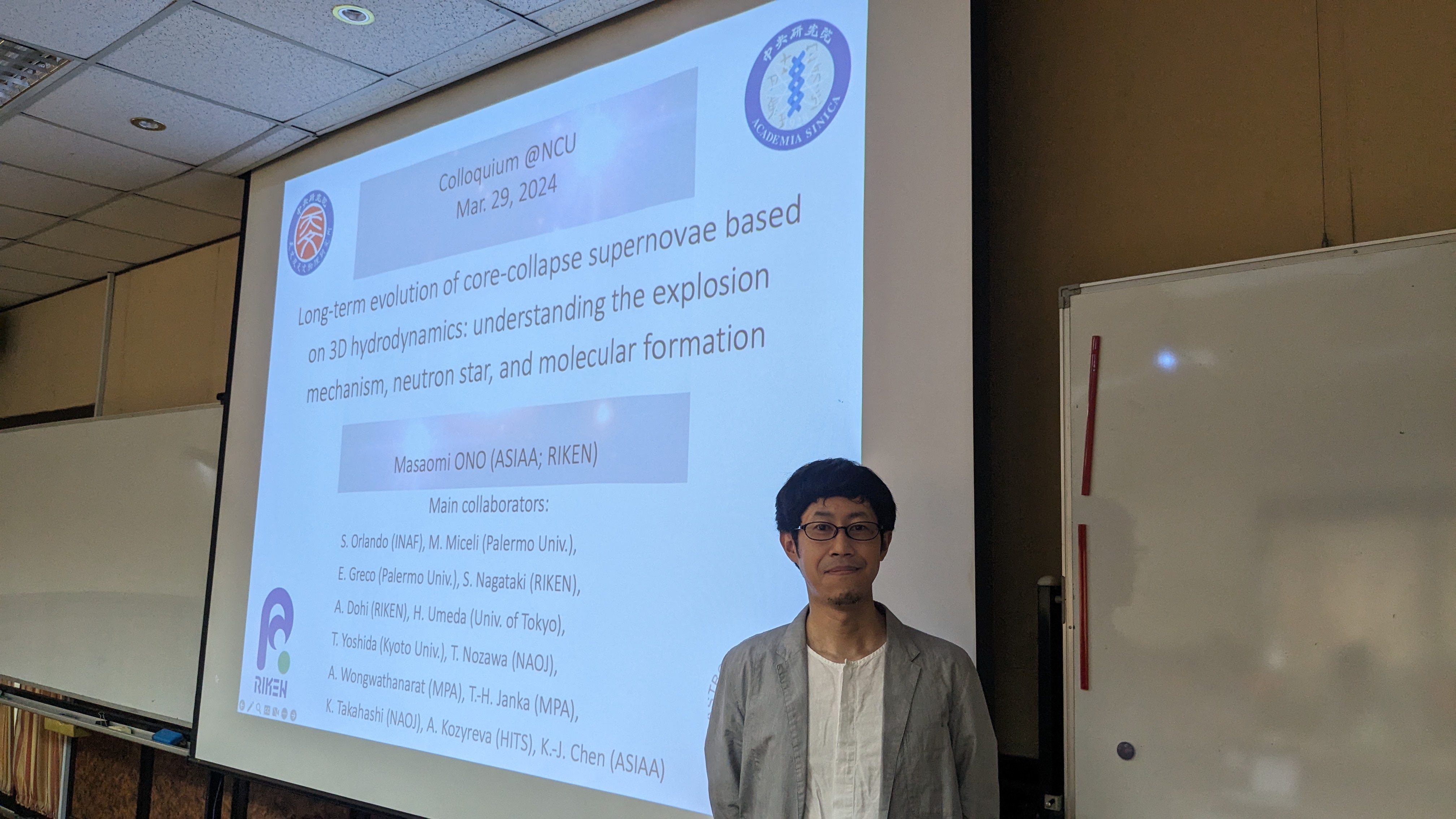Prof. Masaomi Ono (ASIAA)

"Long-term evolution of core-collapse supernovae based on 3D hydrodynamics: understanding the explosion mechanism, neutron star, and molecular formation"
時間/地點: 2024-03-29 14:00 [S4-1013]
摘要:
Multidimensionality necessary for a successful explosion in theories of core-collapse supernova (CCSN) explosions has suggested that CCSNe are essentially aspherical. Whereas, observations of nearby objects, e.g., SN 1987A and Cassiopeia A (Cas A), at young supernova remnant phases have revealed distinct non-spherical natures. However, how the explosions are connected to their supernova remnants has been unclear due to the lack of long-term multi-dimensional modeling. We have attempted to link CCSN explosions to their supernova remnants via three-dimensional (3D) hydrodynamical simulations for spatially-resolved nearby objects, SN 1987A and Cas A. Together with theoretical modeling of observables, some hints at understanding the explosion mechanisms, progenitor stars, and compact objects have been deduced by the comparisons with observations. In particular, recent observations of the 3D distribution of molecules and iron in SN 1987A by ALMA and JWST, respectively, have provided characteristic features that may be related to the chemical evolution and the explosion mechanism. Furthermore, accumulating recent indirect observational evidence of the undetected neutron star (NS) of SN 1987A makes it a hot topic and motivates us to constrain the NS properties from such observations. In this talk, our recent studies including on molecular formation in the ejecta of SN 1987A (MO+2024, ApJS, 271, 33) are introduced.
回上一頁